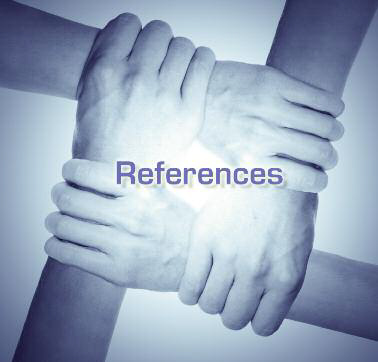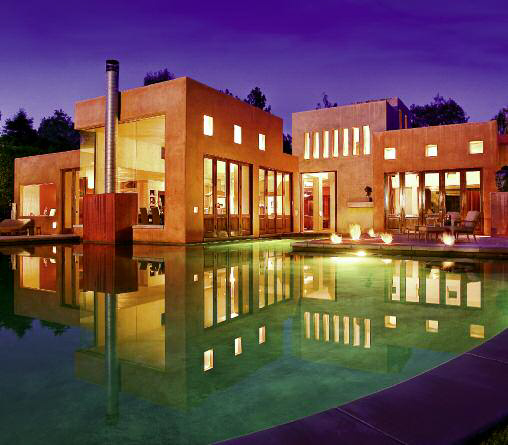Through the Lens

Welcome to the first installment of “References,” an occasional feature that highlights professionals who contribute to the watershaping process. I (and eventually some others) will be using this space to identify people who have had a significant effect on my work – and to suggest how similar associations might be helpful to other watershapers.
This time around, I’ll deal with something that has always been dear to my heart: photography. Ernest Hemingway once said, “Anything that was ever any good, you pay for” – and I can’t think of an area where that’s truer than it is with quality photography.
In the watershaping business, it’s extraordinarily important to present clients with options and directions. You can do that to some extent with drawings that conceptualize what might be created, but I’ve always believed that photographs are more powerful: They show complete scenes that actually exist and do a great job of helping clients visualize the potential of their own properties. In short, great photography drives desire, stokes the imagination and demonstrates and defines value.
My current favorite in this respect is an amazing artist: Cristian Costea of Costea Photography (Santa Ana, Calif.). I met him several years ago when he shot one of my projects, and I renewed the acquaintance when he recorded one I completed in Malibu, Calif., not long ago. In both cases, he’d been brought in by the architect – and after seeing what he achieved with those projects, I was hooked: He’s now my go-to photographer.
 Be forewarned: Quality photography can be an expensive proposition, and work of this caliber does not come cheap. But to my way of thinking, if you’re serious about recording your work on a level that sets you apart, you must find someone with this kind of skill and talent, whatever the cost.
Be forewarned: Quality photography can be an expensive proposition, and work of this caliber does not come cheap. But to my way of thinking, if you’re serious about recording your work on a level that sets you apart, you must find someone with this kind of skill and talent, whatever the cost.
***
A Brief Interview with Cristian Costea
WaterShapes: When you show up at a site you’re going to shoot, what are you looking for?
Costea: I’m interested in the “big gestures.” In almost all forms of architecture or landscape architecture, there’s a gesture, something that makes a defining statement. In some places, such as the Disney Music Hall in Los Angeles, the curvilinear architecture is an obvious gesture, but then there are other elements within the space that are not so obvious but are also extremely important. In just about every setting that’s been created by a talented designer, there’s going to be something that can be found and expressed using the camera.
WaterShapes: In the Malibu project you shot – the one for which David Tisherman designed the swimming pool – what was the big gesture there?
 Costea: Certainly the swimming pool, with its long, rectilinear shape, was the key feature in the landscape. It worked beautifully with the house, which had beautiful arches and geometry all surrounded by beautiful landscaping. Yet it was the pool that really captured the scene with its reflections and the way it drew the eye toward the house. So I exploited it along with the rock wall and cabana next to it.
Costea: Certainly the swimming pool, with its long, rectilinear shape, was the key feature in the landscape. It worked beautifully with the house, which had beautiful arches and geometry all surrounded by beautiful landscaping. Yet it was the pool that really captured the scene with its reflections and the way it drew the eye toward the house. So I exploited it along with the rock wall and cabana next to it.
WaterShapes: Why should watershapers invest in professional photography?
Costea: From a purely pragmatic point of view, if someone has spent so much and worked so hard to create something unique, it makes no sense to record it poorly. You can really kill the soul of a place by representing it poorly in photographs: Everyone who subsequently comes to know the place by way of those images is, in a way, prevented from truly understanding it.
In a more emotional sense, if you’re the creator of something special, why would you not want to capture the essence of your work and keep it? After all, things change – and there may well come a time when the place doesn’t exist in that same way anymore. To honor your work, you should capture the soul of the place when it is finished and completely represents your work.
WaterShapes: On your website, you demonstrate how photos can be altered and improved. What role does editing play in your work?
Costea: In many situations, there are small elements that really shouldn’t be there from a purely visual standpoint – for example, shadows that aren’t where they should be, or glare from surfaces, or colors that aren’t as expressive as possible. That’s on the creative side, but on the practical side there are things such as fire hydrants, pipes, sprinkler heads and electrical outlets – visual noise that disrupts the scene and can and should be removed.
WaterShapes: How do you approach photographing water?
Costea: It depends if it’s moving or still. Photography is frozen in time, so you have to decide whether you’re going to show motion or not.
When I see water that has vertical elements, such as a fountain, for example, then I know it has to demonstrate motion and I look at how the lines created by the movement participate with the surrounding lines of buildings or landscapes. By contrast, when it comes to pools, I like to create photographs where the surface appears solid, because we naturally respond to hard surfaces visually.
What I do is create ripples, sometimes by tossing a piece of ice into the water, and expose the image long enough so that the surface becomes just slightly opaque. This gives the water visual weight – meat on the bones, something we think we can almost touch. It’s all about knowing how to exploit water visually.
David Tisherman is the principal in two design/construction firms: David Tisherman’s Visuals in Manhattan Beach, Calif., and Liquid Design of Cherry Hill, N.J. A designer and builder of custom, high-end swimming pools since 1979, he is widely known in the pool and spa industry as an advocate for the highest possible standards of design, engineering and construction. He has degrees and credentials in industrial design, scientific illustration and architectural drawing from Harvard University and Art Center College of Design; has taught architectural rendering and presentation at UCLA; and is currently teaching a course on design and construction of residential watershapes at UCLA. An award-winning designer, he serves as an industry expert for California’s Contractor State License Board. Tisherman was a 2008 recipient of The Joseph McCloskey Prize for Outstanding Achievement in the Art & Craft of Watershaping.










